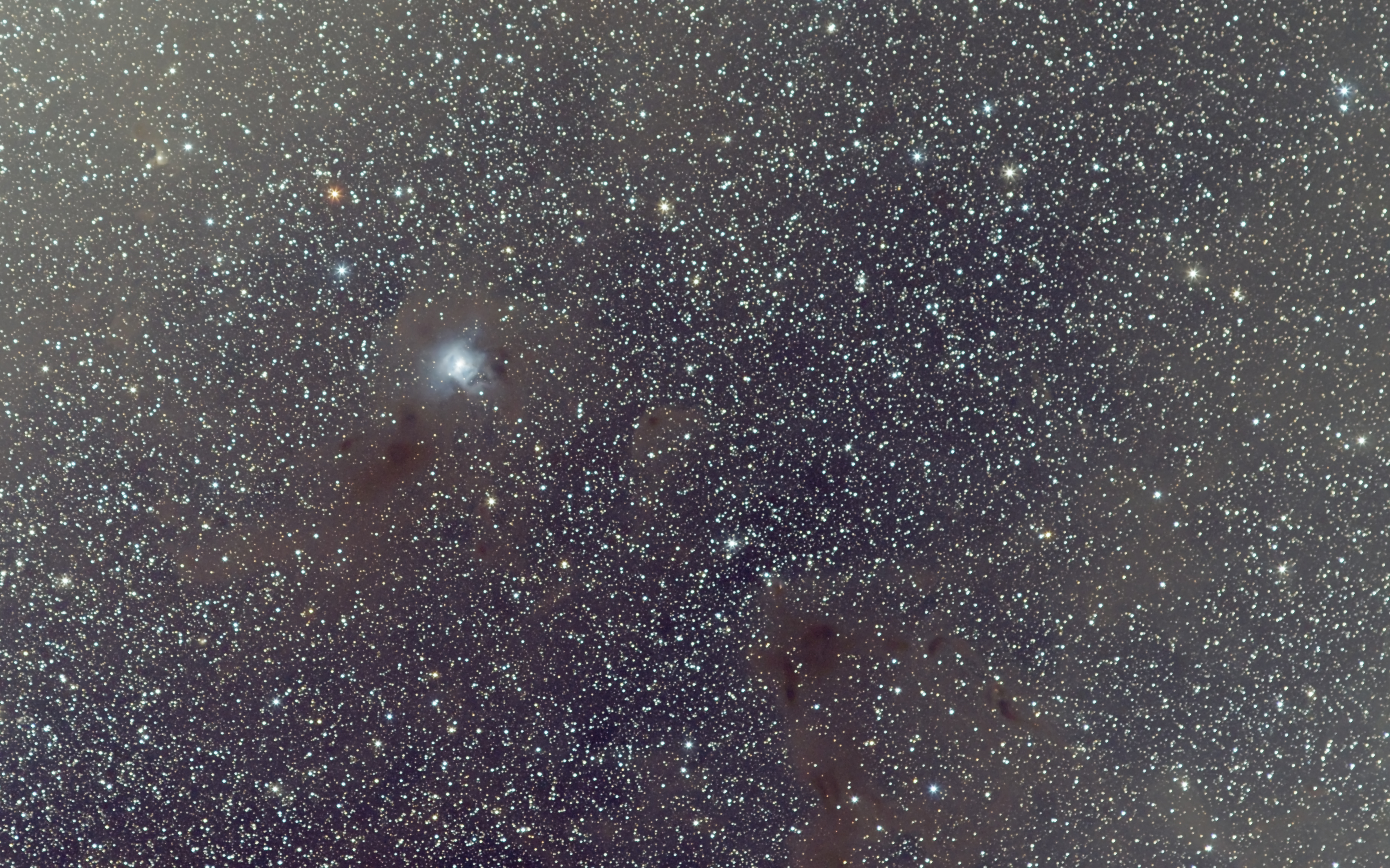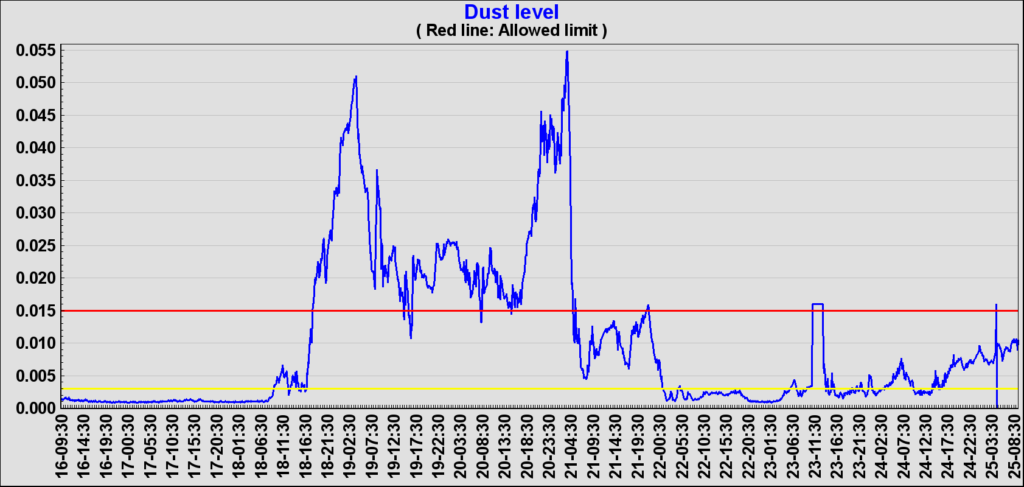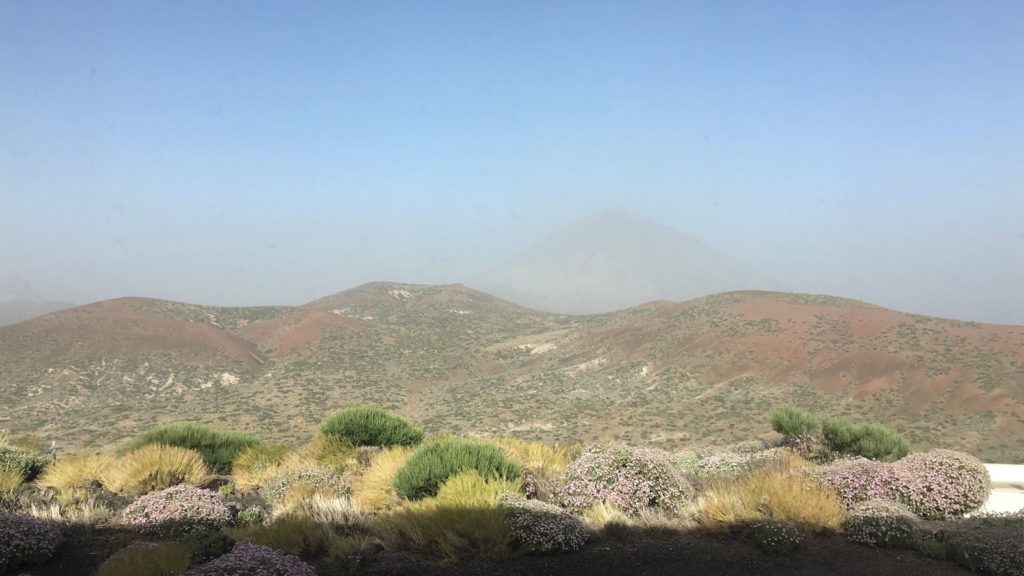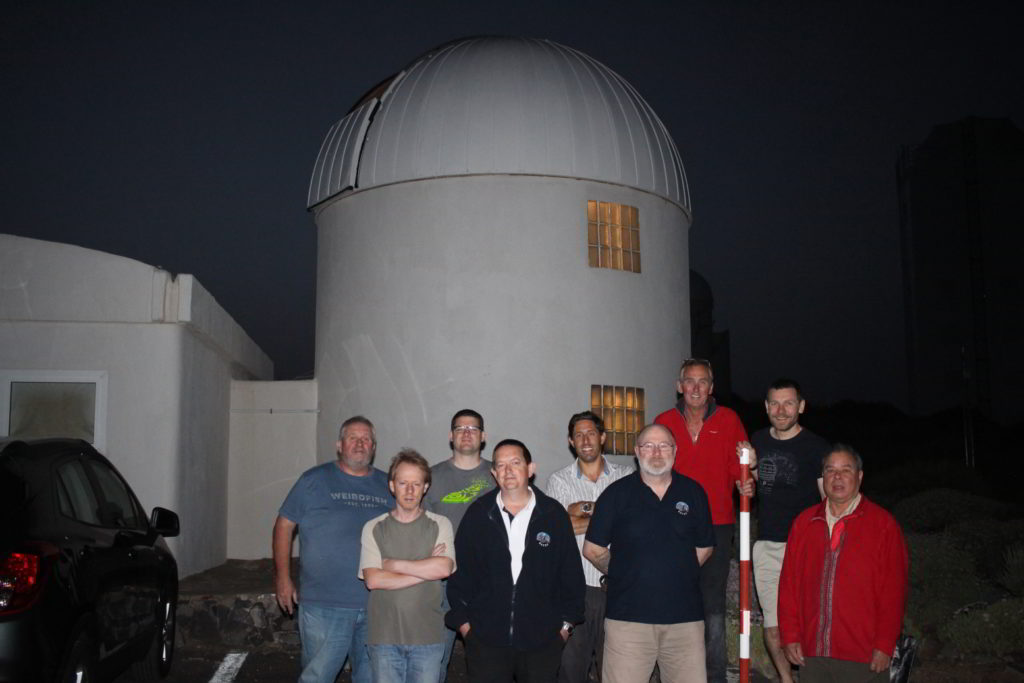Two articles written by BASEG members have been published in the September 2018 edition of Astronomy Now and includes images by another member :
- Observing In Paradise
- The Solar System In One Night
Two articles written by BASEG members have been published in the September 2018 edition of Astronomy Now and includes images by another member :
Now we have returned from the Tenerife trip, sorting through the data accumulated, in my case some 0.72 Terabytes, starts. Most of the data comes in the form of movie files for the Moon and planets through the MONS telescope. The rest is a mixture of deep sky objects and a small portion of night time shots around the observatory. An example is this shot taken from the ridge overlooking the observatory.

So what types of image am I processing right now? Well here is one I processed in the past few weeks whilst I start to work on some shots of Mars. This is an image of NGC 7023, the Iris nebula. What you are looking at is a reflection nebula, containing dust and gas which has it’s electrons excited by the star within. The rest of the image contains a lot of stars and a huge amount of Interstellar Flux Nebula, pervading clouds of dust within this region of space.

So I will go back to processing some more images and see if I can crack through the 10s of images yet to come from our successful week away.
The group has had to bring the session to an early close due to the Saharan dust levels wiping out the sky quality. Known as the Calima, hot winds from the East bring Saharan dust across to Tenerife which destroys the sky quality needed for deep sky imaging.
We monitored the SONG (Stellar Observations Network Group) weather page throughout the week to assess our chances at clear sky imaging. When the red level is breached then the resident telescopes at Teide close their domes. For our purposes we were looking for dust levels around 0.001 which is below the yellow line.

Before the Calima arrived the SQM was measured to be around 21.68 mag/arc sec2 (Bortle class 4) compared to around 20.5 (Bortle class 4/5) in the UK local area. Bob’s image also shows the visible layer of Calima dust :

It was a good week for all regardless of the common issues many of us encountered that stopped initial imaging attempts but once into the groove some nice images started to appear both for the portable deep sky imagers and those using the Mons Telescope for spectroscopy and lunar/planetary imaging (Mars/Jupiter/Saturn/Neptune/Uranus).

We would like to extend our gratitude to the IAC for allowing us to the use of the Mons Telescope and the associated facilities ….. gracias amigos 🙂
July 2018 sees another trip to Tenerife with friends from the Basingstoke Astronomy Society Exped Group. I had such a great time last year I can not wait to return again….Super excited.
From Tenerife, the planets will be high in the sky, the summer milky way will be glorious and there are a reasonable hours of darkness (unlike home where it isn’t getting dark at all!). Not only is the site perfect for observing (assuming it is dust free) we also get use of a 20” f15 cassegrain and facilities such as a warm room (table, chairs, kettle), outside electricity to power equipment and access to a toilet. A pleasant change from being in a layby on the hillside.
I am really excited to be able to observe the planets. Being located in the far southern sky for some years to come the major planets are out of sight from my observatory, hidden behind nearby trees. The major 3 will be well placed: Jupiter, Saturn and Mars*. In the evening sky, Venus and Mercury are visible and in the morning sky Uranus and Neptune are returning.
I am wondering if it will be possible to observe all major bodies of the solar system in one go? The planets are all well placed – plus there is the minor planet Ceres, asteroid Vesta, the crescent Moon, solar observing during the day, zodiacal light, the moons of the outer planets – and in the foreground we have earth’s Mt Teide (the highest mountain in Spain). Faint Pluto is possible but at mag 14 it will be a challenge. I have observed it with the 20” dobsonian at Les Grange in France so assuming I can star hop (which is a challenge as the telescope can be rather ungainly) it should be visible. There are is also a relatively bright (mag 10 or so) Comet 21P Giacobini-Zinner that we can track from night to night.
A key question is what equipment to take. We have access to a telescope which is fantastic for observing the planets but it is always well utilised by the group. While I would love to fill my boots it wouldn’t be fair to use it exclusively so I am taking my 6” Maksutov and a tracking mount (all second hand) along with my binoculars, camera, eyepieces, sketching equipment etc. I paid extra for my flight so I can take a hand-carry suitcase. This means I can take all my delicate optics with my in the cabin while the heavier, more robust tripods, extension cable etc can go in the hold.
This means I can be:
I made a video of the set up I am taking and how it all fits into 2 suitcases below :
A report and video of the amazing sights we saw last year is also below
* Jupiter is just past opposition (it was at opposition on 10 June) with Saturn only a week past opposition and Mars nearly at opposition (it reaches opposition on 27 July just after we return).
After a couple of trips to Tenerife with my Canon 5D Mkii, Canon f2.8 200mm prime lens on an AstroTrac as my main imaging kit, I’ll be adding a Takahashi FS60-CB with a flattener and an ATIK Infinity Mono camera to the mix.
Recent imaging for the dstl Project Argus has helped resolve adapter issues with the FS60 / Canon DSLR combination as it is a FS60 special and not a regular Wide EOS adapter that is required. Live broadcasting to YouTube will also be a new possibility this trip with the ATIK Infinity camera.
A bunch of us are planning a trip to the astronomical facility at Mount Teide sometime in the summer 2018.